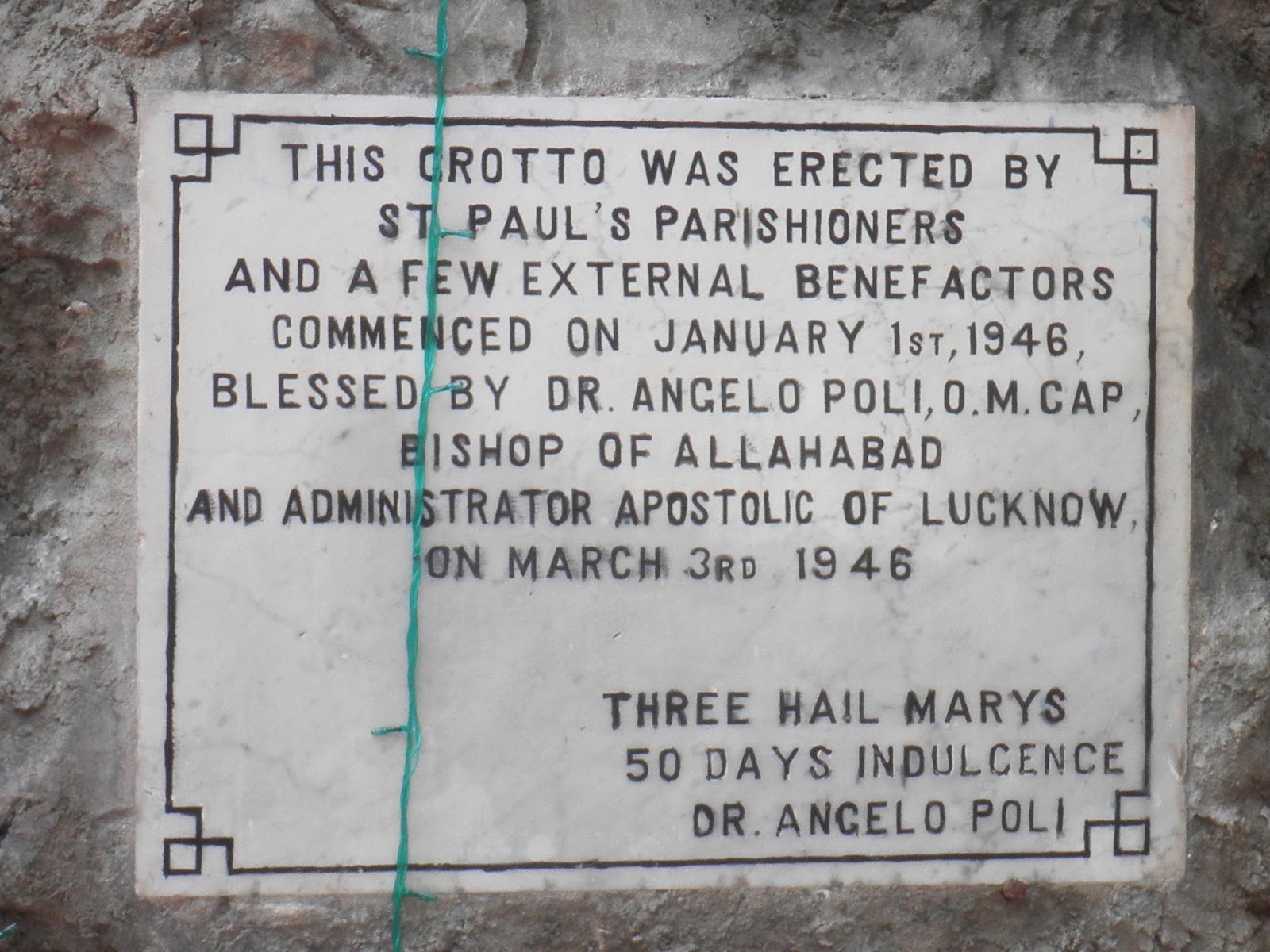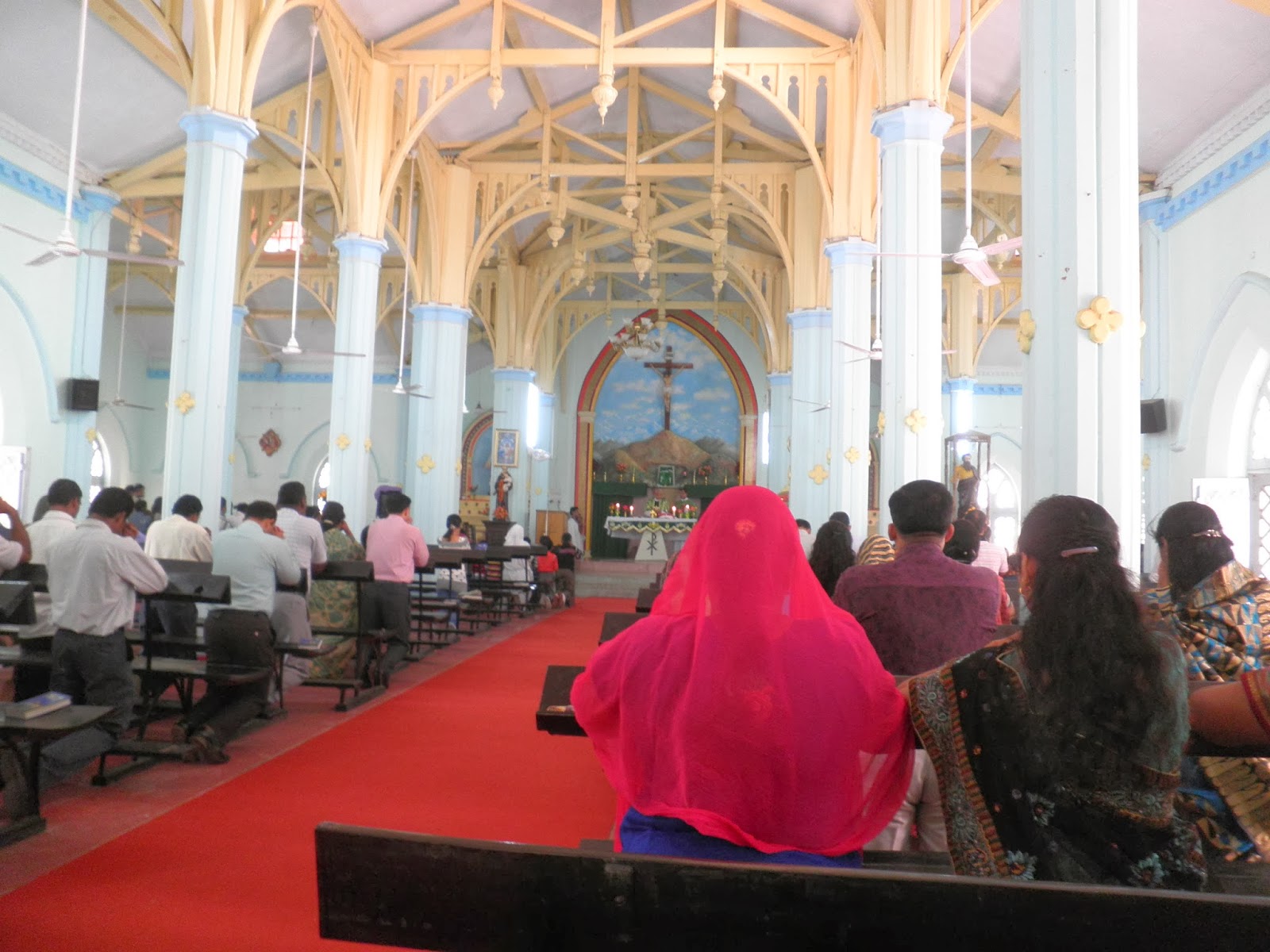St.
Paul's Church is located in the Lucknow cantonment area close the
Dilkusha Post office and the protestant All Saints Garrison Church.
St. Paul's compound in Dilkusha also houses a School and a seminary.
The front porch and the main entrance door to the church
The front porch
Following details can be found about the
beginning of St. Paul’s Church in the book ‘Bishop Hartmann’ by
Fr. Fulgentius O.F.M.Cap.
“In 1860 the Cantonment Church (i.e. St.
Paul's) and the Chapel in the Civil Lines (i.e. St. Joseph's)
in Lucknow were still under construction. For the rest there was no
sign of life and activity...
His Lordship (i.e. Bishop Hartmann) has
left us in the form of a very brief journal... It must be noted at
this time of the year the day temp. Ranged from 43°C to 45°C...
May 10th 1862 – Arrival in
Lucknow. The following day I blessed the two chapels which were
hardly completed, viz, St. Paul's in cantonment and St. Joseph's in
the city...
June 1st – Sunday:... Due to my
disease I had to interrupt my Masses both in the cantonment and in
the city.
The Cantonment church at Dilkusha (Lucknow) was
built by Government.”
As
per Wikipedia 'The
college was established in 1957 and is affiliated to the Indian
School Certificate Examinations,
New Delhi'.
Around the Church - 1
Around the Church - 2 (view from the parking area)
Around the Church - 3 (view from the parking area)
Around the Church - 4
Around the Church - 5 (View from the Grotto)
The porch and the entrance to the Church
Around the Church - 6 (view from the parking area) with the statue of the Patron Saint - St. Paul in the midst. The School building can be seen on the left
Statue of the Patron Saint - St. Paul at the back of the Church i.e. behind the High Altar
The Grotto
The inscription stone on the Grotto
The nave and the pews
The pews and the stations of the Cross on the Church wall - 1
The pews and the stations of the Cross on the Church wall - 2
The confessional by the entrance door - there is another one of the other side of the door
The beautiful church ceiling - 1
The beautiful church ceiling - 2










































